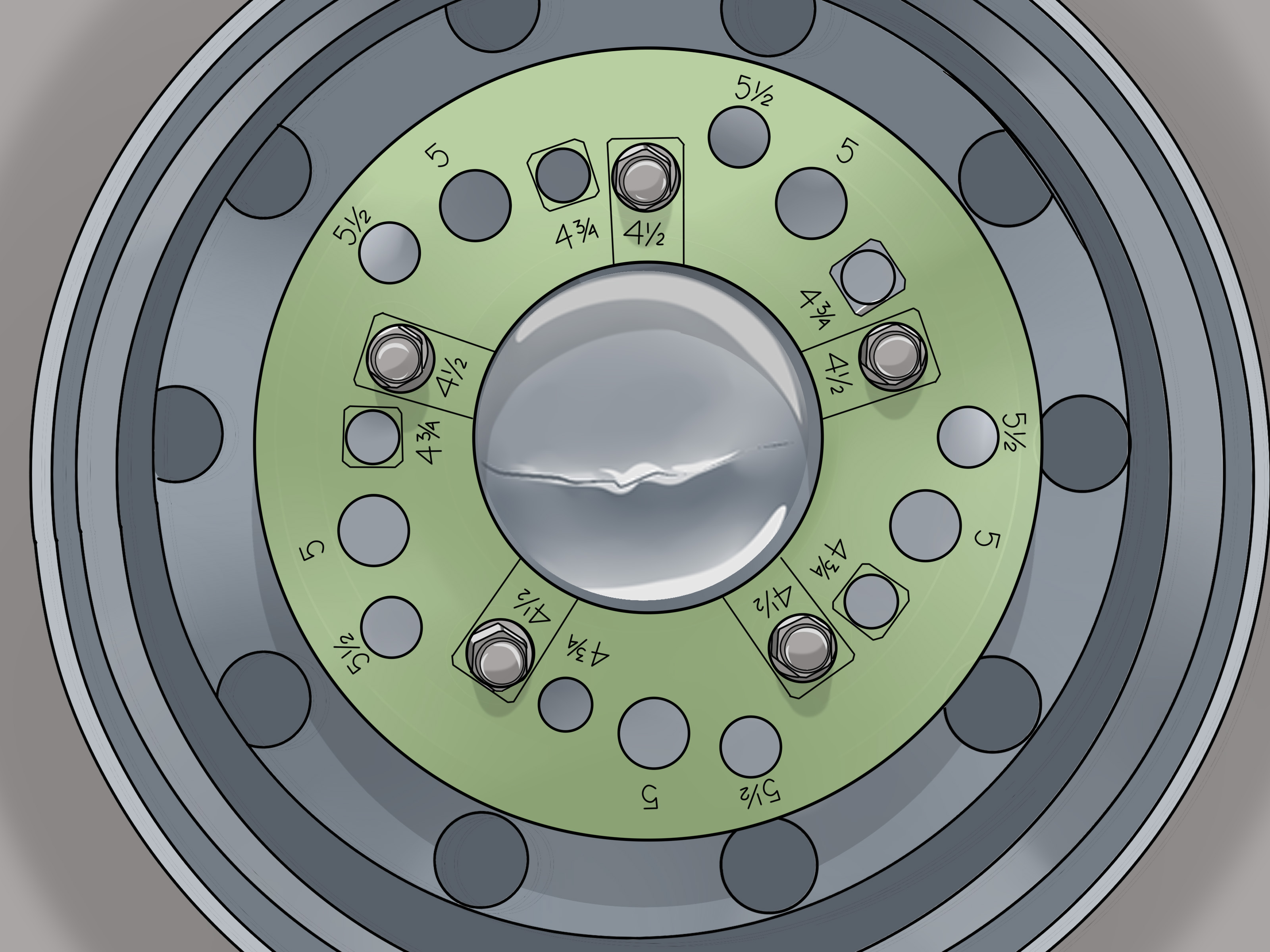Ever found yourself staring at a beautiful set of rims, heart aflutter with the desire to upgrade your car's look? But then, a wave of confusion washes over you. Will they even fit? The key to answering this crucial question lies in understanding your car's bolt pattern – a seemingly small detail that holds immense importance. This guide will equip you with the knowledge to confidently decipher this critical piece of information.
Determining your wheel bolt pattern is essential for ensuring compatibility between your vehicle and new rims. The bolt pattern, also known as the lug pattern or PCD (Pitch Circle Diameter), refers to the arrangement of the lug holes on the wheel hub. It's expressed as two numbers: the number of lug holes and the diameter of the circle formed by the centers of those holes.
The history of the bolt pattern is intertwined with the evolution of the automobile itself. As cars became more sophisticated, so did their wheel and tire assemblies. Standardized bolt patterns emerged as a necessity to ensure interchangeability and simplify manufacturing. Knowing how to identify your bolt pattern ensures you select the right rims, preventing safety hazards and ensuring proper fitment.
One of the main issues related to figuring out your bolt pattern is the potential for incorrect identification, which can lead to purchasing incompatible rims. Imagine the frustration of receiving your dream wheels only to discover they don't fit! This guide will help you avoid such disappointments by providing clear and concise methods for accurate bolt pattern determination.
There are several ways to identify your bolt pattern. For vehicles with an even number of lug holes, measure the distance from the center of one lug hole to the center of the lug hole directly across from it. This measurement is your bolt pattern diameter. For vehicles with an odd number of lug nuts, the process is a bit more complex and might require a bolt pattern gauge or an online calculator. Simply inputting your measurements into these tools will quickly reveal your vehicle's PCD.
Understanding how to identify your vehicle’s bolt pattern has numerous benefits. Firstly, it ensures proper fitment, which is crucial for safety and handling. Incorrectly fitted wheels can lead to vibrations, premature wear and tear on suspension components, and even wheel detachment, posing serious safety risks. Secondly, knowing your bolt pattern saves you time and money by eliminating the hassle of returning incompatible rims. Lastly, it empowers you to explore a wider range of wheel options, allowing you to customize your car's appearance to your exact preferences.
Here's a step-by-step guide to figuring out your bolt pattern: 1. Locate the number of lug holes. 2. Measure the diameter for even-numbered lugs as described above. 3. For odd-numbered lugs, utilize a bolt pattern gauge or online calculator.
Advantages and Disadvantages of Knowing Your Bolt Pattern
| Advantages | Disadvantages |
|---|---|
| Ensures proper wheel fitment | Requires some effort to measure accurately |
| Enhances safety and handling | Can be confusing for odd-numbered lug patterns |
| Saves time and money |
Best Practices: 1. Always double-check your measurements. 2. Consult your vehicle's owner's manual for the bolt pattern information. 3. Use a reliable bolt pattern gauge or calculator. 4. If unsure, seek professional assistance from a tire shop.
Real-world Examples: 1. A common bolt pattern is 5x114.3, found on many Honda and Toyota vehicles. 2. 5x100 is often found on Subaru and some Volkswagen models. 3. 5x120 is prevalent on BMWs.
FAQ: 1. What is a bolt pattern? (Answer: The arrangement of lug holes). 2. Why is it important? (Answer: For proper wheel fitment and safety). 3. How do I measure it? (Answer: As described in the step-by-step guide).
Tips and Tricks: When measuring, use a precise ruler or caliper for accurate readings. Clean the wheel hub surface before measuring to remove any debris that could affect the accuracy of your measurements.
In conclusion, knowing how to determine your wheel bolt pattern is a fundamental skill for any car enthusiast. It empowers you to make informed decisions when selecting new rims, ensuring both safety and aesthetic satisfaction. By understanding the methods outlined in this guide, you can confidently navigate the world of wheel upgrades, avoiding costly mistakes and ensuring a perfect fit. Take the time to accurately identify your bolt pattern – it's a small effort that yields significant rewards in terms of safety, performance, and personalized style. So, go ahead and unleash your inner car enthusiast, armed with the knowledge to transform your vehicle's appearance with confidence!
Jawatan kosong pensyarah melaka your path to academia awaits
Resmed cpap machine issues
The allure of fantasy knight armor art
Chevy Wheel Bolt Pattern Chart - Khao Tick On
2024 Nissan Altima Bolt Pattern - Khao Tick On
Explaining Wheel Sizes What to Know About Your Rims - Khao Tick On
F150 Wheel Bolt Pattern Size - Khao Tick On
How To Measure A Rim Lug Pattern at Carmen Reed blog - Khao Tick On



